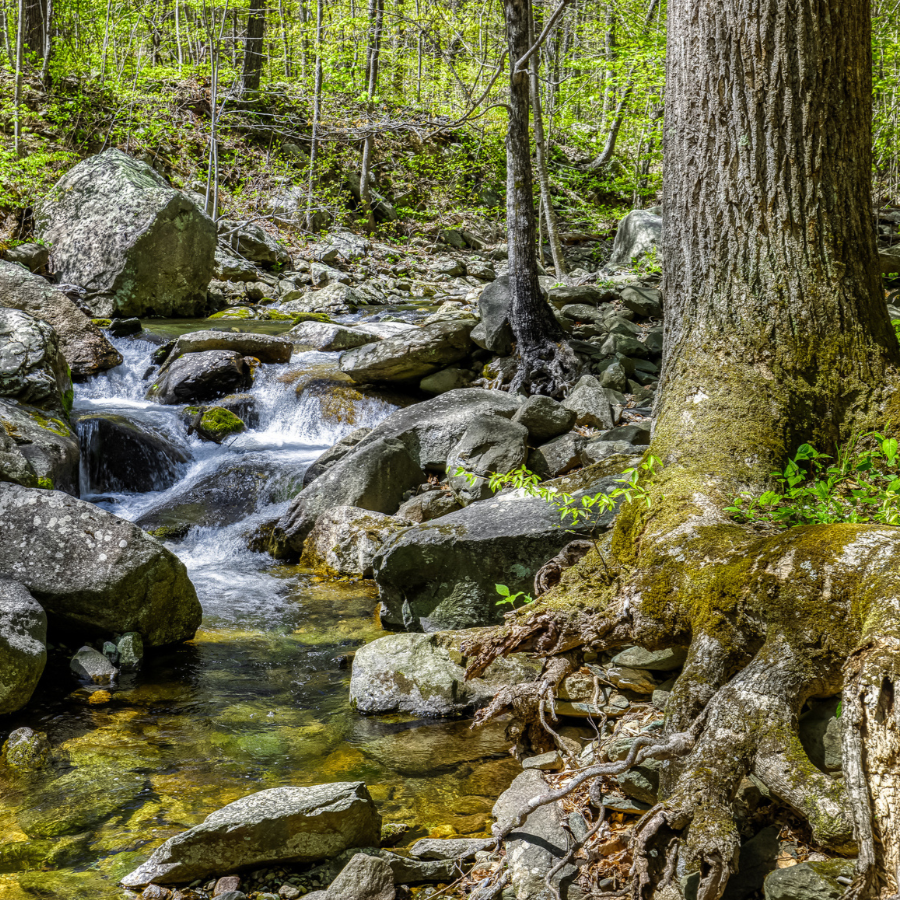Five spots you *otter* try otter-spotting in the Potomac River region
/Local otter experts and enthusiasts help us identify otter activity in the Potomac River Region.
photo credit: © Matt Felperin, River Otter at Huntley Meadows Park
Calling all fans of the adorable river otter: we found five otter haunts in the Potomac region with help from local experts and nature lovers. Otters are a lot like us; they enjoy a good meal, clean water, and goofing off with friends (but they make it extra cute). Because they’re pollution-sensitive and top the food chain, their presence signals clean water and ample fish (aka a healthy ecosystem).
Once abundant throughout the continent, river otter numbers dropped dangerously low in the 19th and 20th centuries due to trapping and pollution. In recent decades, a number of conservation and reintroduction programs helped them recover. The Potomac River is one otter habitat that has seen improved health thanks to years of local efforts to restore water quality. Our 2023 Potomac River Report Card graded the river a “B,” up from a “B-” in 2020 and a “D” in 2011. The Potomac Conservancy’s ongoing work to protect the Potomac River, its tributaries, and surrounding land supports the continued recovery of the river otter – our 2024 Critter of the Year!
Otters now “likely occur throughout the Potomac River” but are often hard to spot, Katrina Lohan of the Chesapeake Bay Otter Alliance said. Lohan and other intrepid observers helped us identify five places to try your luck otter-spotting around the Potomac.
1. Occoquan Bay National Wildlife Refuge
otters at Occoquan Bay National Wildlife Refuge
Otters are spotted by visitors and trail cameras at Occoquan Bay National Wildlife Refuge south of DC. “Our refuge has their preferred habitats like freshwater lakes, and they can be undisturbed by people,” Gabriela Youngken, visitor services specialist, said. Otters are also detected here through the discovery of scat.
Protip: River otter scat is typically found in a concentrated area and commonly contains fish bones, scales, and shells.
2. Huntley Meadows Park
Otters are observed at Huntley Meadows Park, an area of forest, meadows, and wetlands in Fairfax County. Posts in the Huntley Meadows Park Photography Facebook Group show recent otter sightings in the spring of 2024.
photo credit: © Michael Q. Powell, River Otter at Huntley Meadows Park
“It’s always a delight to see beautiful, elusive wild creatures, like otters and beavers, especially in the kind of suburban environment where we live,” contributing photographer Mike Powell said.
While park staff noted increased otter activity in 2020, they said otters are currently seen infrequently. Ecologist Dave Lawlor, the park’s natural resource manager, did tell us there’s a “well-established population of otters in Fairfax County along the tidal [and nontidal] Potomac River,” and that parkland near the Potomac “is a great place to search for otters at dawn or dusk.”
Protip: “Wild river otters are nocturnal, so most individuals who see them often only see them in the very early morning hours,” Lohan said.
3. Along the Anacostia River
PHOTO CREDIT: Dmitry Azovtsev, CC BY-SA 3.0, river otters
“River otters have been documented on camera traps upstream in the Anacostia River near D.C. by folks at the Anacostia Watershed Society,” Calli Wise, a colleague of Lohan, said. The society captured footage at the University of Maryland College Park Campus and Heurich Park. Because otters need clean water, their activity around the Anacostia, a Potomac tributary, is a positive sign.
Protip: “Though they are cute & playful, you otter remember that they are wild animals & never get too close,” the National Park Service stated when a river otter visited the tidal basin in 2021.
4. C&O Canal National Historical Park
photo credit: Dave Roberts, CC BY-NC 4.0, Otter near Great Falls
Otters are seen along the waterways of the C&O Canal National Historical Park, including near Great Falls. The website for Get Out & Go Tours, a local canal tour group, states otters are seen “most frequently in the watery western section of the C&O Canal.” The C&O Park’s Facebook page confirms this location tip. Visitors report seeing otters near Great Falls as well as to the south around Fletcher’s Cove (one of Potomac Conservancy’s recommended places to enjoy the water this summer).
Protip: Keep an eye out for otter slides. As the C&O Park Facebook put it, “Part of the riverbank may be packed down that allows them to slip into the water easily.” Also listen for their diverse calls, like twitters, whistles, chirps and growls.
5. Recent iNaturalist Otter Sightings in the Potomac River Region
photo credit: TaviEllis, CC BY-SA 3.0, River otter tracks
Several experts recommended iNaturalist for eager otter-watchers. This online community facilitates nature-observation-sharing. For example, a user documented a river otter in Accokeek, Maryland, in April 2024. If you use iNaturalist, Wise “cautions folks to limit location visibility on their sightings for sensitive species,” noting that otters are a trappable species in Maryland and Virginia.
Protip: Learn to identify otter tracks. Westmoreland State Park Education Specialist Andrea Gamache described them as “five-pointed, clawed, webbed toes with a large rear pad.”
Bonus: a few other locations with evidence of otters: West Moreland State Park, Chapman State Park and Smallwood State Park. And, don’t forget the otters at the National Zoo – a father and son named Emmett and Potomac.
The Potomac Conservancy’s work to improve water quality and preserve otter habitats is ongoing, and volunteers play a vital role! If you’re a die-hard otter fan who wants to support their well-being and increase your chances of landing an otter spotting, spend some time along the water at a trash cleanup. Clean water is crucial for otters (and humans)!











